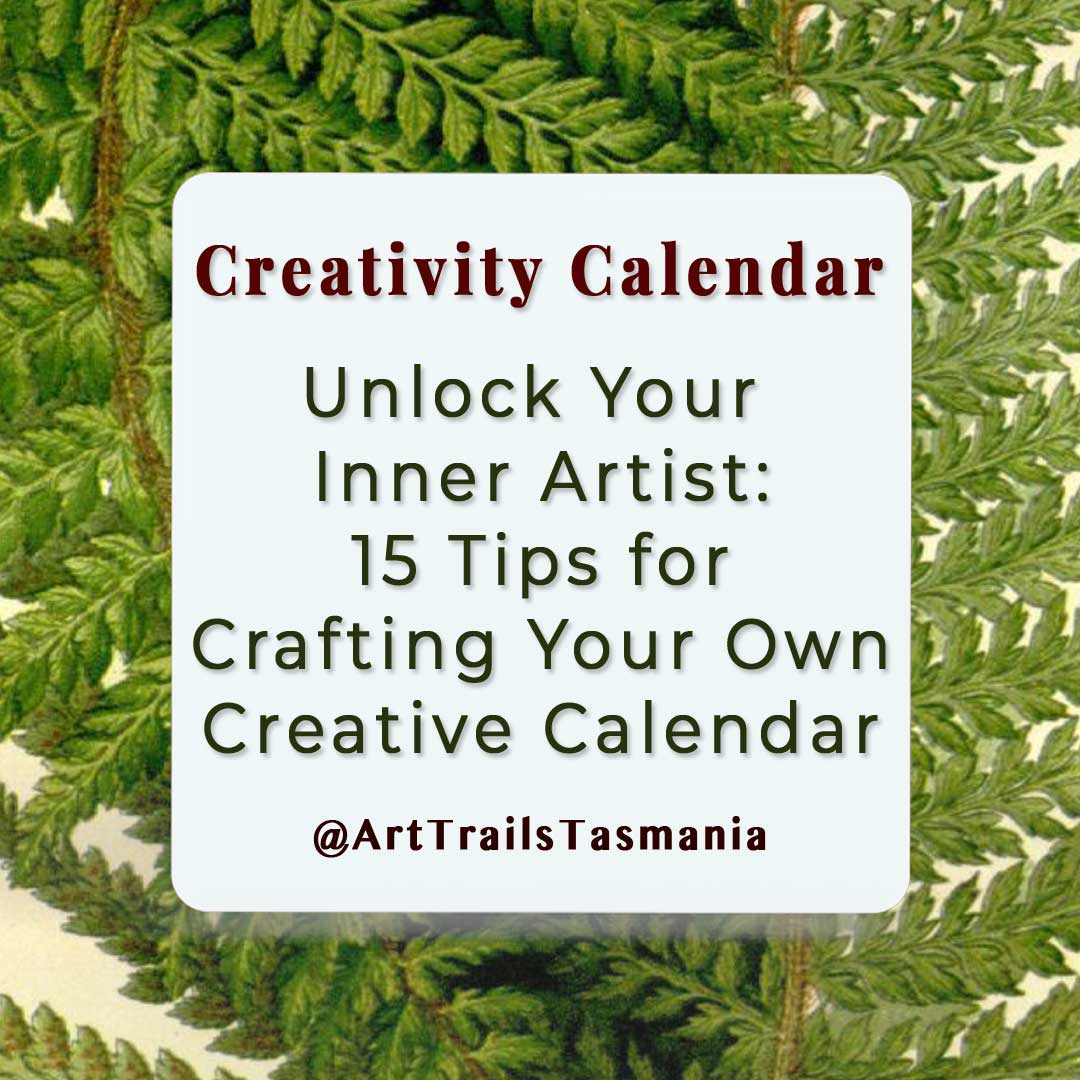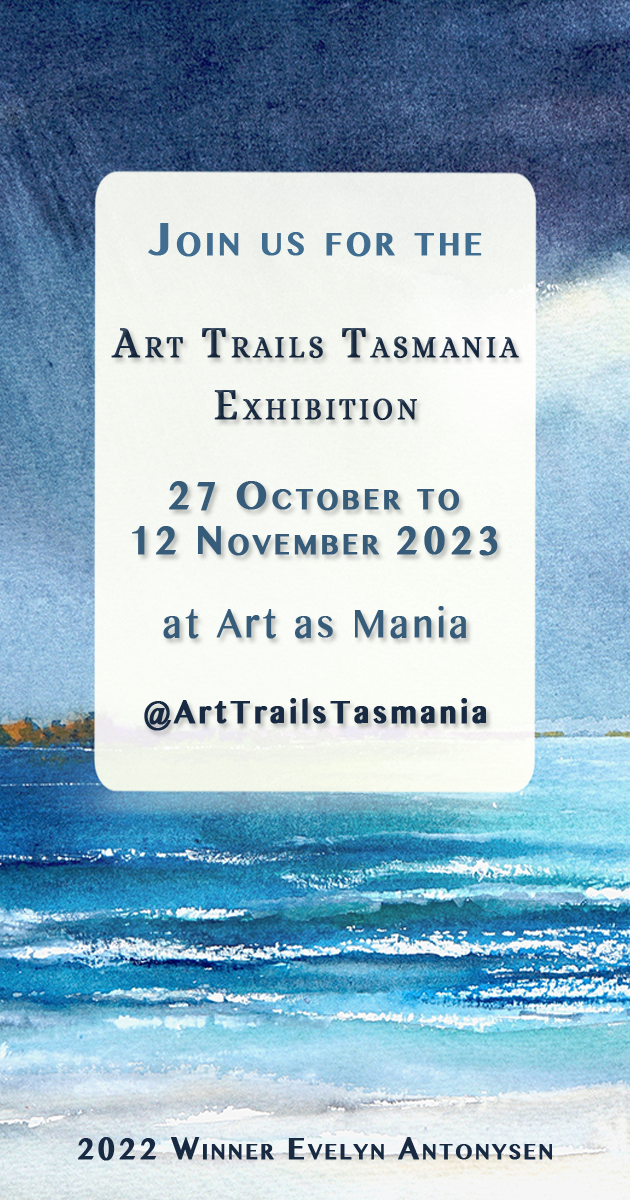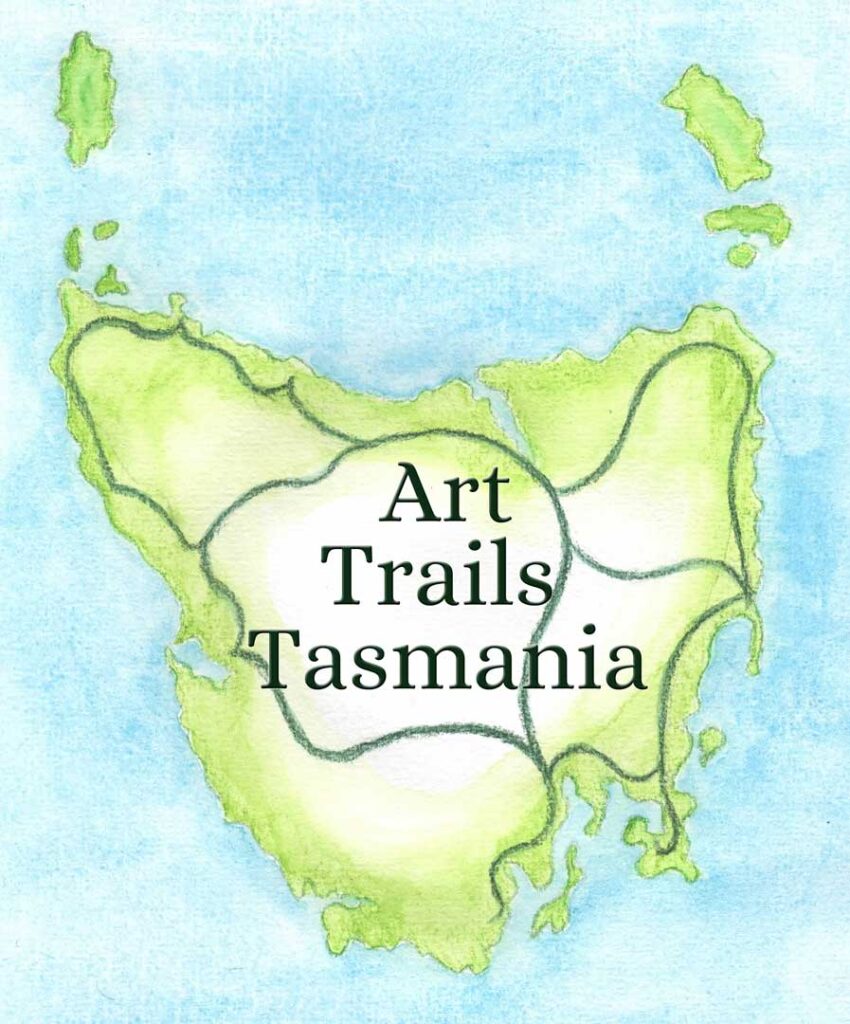How to Setup Your Own Creative Calendar Bringing the Arts and Crafts into Daily Life
Creating your own creative calendar to incorporate more arts and crafts into your daily life is a wonderful way to infuse creativity into your routine.
Creativity is a wonderful path to well-being, bringing more joy into each day and connection with the world around you.
To help you get started with figuring out what works best for you, there are 15 tips for how to craft your own creative calendar.

15 Tips for Crafting Your Own Creative Calendar
Here’s a step-by-step guide to help you set up your own creative calendar:
1. Define Your Goals and Interests:
Start by identifying your creative goals and interests. Do you want to explore painting, drawing, knitting, or any other craft? Determine the types of creative activities that interest you the most.
Remember that you can experiment and explore, you don’t have to be an instant Margaret Preston or Grace Cossington-Smith. It takes years of constant work to get to that stage. What matters most is the exploring and doing.
2. Allocate Time:
Assess your daily schedule and allocate specific time slots for creative activities. Even setting aside just 15-30 minutes a day can make a significant difference over time.
A nifty way to get into the groove of a daily practice is to get involved in an online challenge.
A weekly class or art group catch up can be an ideal way too, as you will always grow creatively with practice.
3. Set Realistic Goals:
Be realistic about what you can accomplish in the time you’ve allocated. Setting achievable goals will help you stay motivated.
There is no use in setting unrealistic expectations for yourself that you can’t achieve and end up beating yourself up about.
Instead, be kind to yourself and enjoy the experiences. That is far more fun, and ultimately, rewarding.
4. Gather Supplies:
Make sure you have the necessary supplies and materials for your chosen creative activities. Keep them organised and easily accessible.
You can also have a look at what you do have already and figure out projects to make use of these existing treasures.
Setting boundaries can also help inspiration and creativity. Maybe think in terms of three; three colours, three fibres, three stitches, three tools, three filters – you get the idea.
5. Create a Weekly Plan:
Plan your creative activities for each day of the week. For example, you might choose to paint on Mondays, try a new craft on Wednesdays, and do a creative writing session on Fridays.
Your plan can also include activities like discovering other artists and makers, reading artist biographies, exploring blogs, Facebook groups, #Tasmanianartists (and other hashtags that light you up), getting to your local library and diving into their arts and crafts magazines.
This is about making it all achievable and bringing daily creative joy into your life, whether it is for 10 minutes or a bundle of precious hours.
6. Theme Days:
Consider having theme days or weeks where you focus on a specific type of art or craft. For example, you can have a “watercolour week” or a “photography day.”
This could be great fun sharing with an art and craft friend. Think maybe of a walk where you’re both taking photographs of nature or, if you’re in a city, an urban space. Making the focus on something that gives you joy is always a winner.
7. Mix It Up:
Don’t be afraid to experiment with various creative activities. This can help prevent burnout and keep your creativity fresh.
This is something I hear often from our members, trying different mediums and techniques is a great way to play, to open up the channels to creativity and have fun. This lets you grow and flourish creatively.
8. Involve Others:
Encourage friends or family members to join you in your creative pursuits. Creative activities can be a great way to bond with others.
This could be in all manner of ways, from having a regular date to get to exhibitions, whether they’re in your town or a day trip or weekend away to getting along to a Paint and Sip night at the local pub or an afternoon out sketching with friends.
Another option is to go to a workshop or art retreat with a friend. Learning together, experiencing a different location and mediums is something that you’ll remember for years.
9. Create a Dedicated Space:
Designate a specific area in your home for your creative endeavours. Having a dedicated space can make it easier to jump into creative projects.
While this is a dream for many of us, me included, having a space that you can call your own is a game changer.
It doesn’t have to be a large space, it just needs to have the feeling of being your creative space.

Rediscover Coloured Pencil Art with Richard Klekociuk
Meet the passionate coloured pencil and digital artist Richard Klekociuk and explore what gives this successful artist joy in this Artist Profile with Art Trails Tasmania
10. Document Your Progress:
Keep a creative journal or sketchbook to document your progress, ideas, and inspirations. This can be a source of motivation and help you track your growth.
Personally I love sketchbooks. I have a collection of them from ones that are focused more on nature journaling through to the ones I use to plan out creative projects (probably more of a mind dump at times!), and even a series that is a mixture of personal journal and art journal.
My nature journals are part of my plein air sketching kit so are chosen for their portability and joy in format.
While my planning sketchbooks tend to be A4 portrait format and used much more in my work spaces.
When I started out I had no idea what I needed and how to use what I had. I was too scared to make a mark in my journals. Now that idea makes me laugh at myself because I know that none of my journals are fabulous works of art and I love each them. So I need not have fussed, all I needed to do was start.
11. Seek Inspiration:
Explore museums, galleries, books, and online resources to gather inspiration for your projects. Attend art exhibitions or craft fairs for fresh ideas.
Getting along to exhibitions, art retreats, open studios, events run by art societies and groups, cafes and shops with art on the walls, artisan markets, fairs and festivals is something I love to do. There’s always loads of inspiration and joy to be found in exploring the creativity around us.
I even plan weekends away and holidays around these creative activities. A holiday with a few of these activities is the best sort of holiday in my books!
Creating time for yourself to dive into an art book is one of my favourite things to do. I’ve learnt to read them cover to cover and pick out the projects I want to explore.
12. Experiment and Learn:
Don’t be afraid to make mistakes and learn from them. Experimentation is a crucial part of the creative process.
This is a deeply important lesson for each of us to embrace. As adults we often seem to forget that when we are learning something we will never be an instant expert. And, to be frank, isn’t it frustrating to be around someone who is at that stage in life when they know everything?
13. Join Creative Communities:
Join local art or craft groups, societies or online communities to connect with fellow artists and crafters. Sharing your work and receiving feedback can be very motivating.
Being able to share time with others who get you and what you’re passionate about is always an important experience to have regularly.
Learning from each other, sharing ideas, techniques and laughs is a wonderful way to spend your time.
14. Stay Consistent:
The key to a successful creative calendar is consistency. Even on days when you don’t feel particularly inspired, stick to your schedule. The act of creating regularly can boost your creativity.
I only learnt how important this is, to do when you are over things for the day, by being diligent about a daily art practice. I made sure that the boundaries around this constant practice were kind to me. I kept a large A4 sketchbook by me on the lounge so that even a five minute doodle could qualify.
Being kind to myself about this made the world of difference to sticking with it, because it is important to me.
15. Reflect and Adjust:
Periodically review your creative calendar and adjust it as needed. Be flexible and adapt to your changing interests and schedule.
If you’re anything like me, you’ll expect too much from yourself and then beat yourself up for when it is all too overwhelming.
So don’t do that. Or, if you do, step back from those negative inner words and have a think of what you would say to your best friend. Would you tell her to be kind to herself, to figure out which parts aren’t working and which are? And then do more of what is working and enjoy that.
Enjoy the Crafting of Your Creativity Calendar
Remember that the most important aspect of your creative calendar is to enjoy the process and have fun. Creativity should be a source of joy and self-expression, so make sure your calendar is designed to bring that joy into your daily life.
Discover our Artist members…
No Results Found
The page you requested could not be found. Try refining your search, or use the navigation above to locate the post.
Read What Our Members Say About Belonging
Join the growing, supportive artists community today and have your Artist story told here.
Belinda is doing a great job creating a professional looking artist hub online. Check out the profile I posted recently to see how well she does them. To all my artist friends let’s help make this THE go to place to discover local artists.
You won’t regret joining Art Trails Tasmania . It’s a welcoming community for creatives at any career stage.Becoming an Art Trails Tasmania member wasn’t a hard decision for me to make as it’s such a wealth of knowledge and support.Being member provides a quality way to showcase your creative endeavours and it’s quickly growing in reach.
We operate a home based picture framing business and recently joined Art Trails Tasmania as a means to giving us exposure to the wider artist community. We have almost immediately seen increase in activity thru our online sites, which I am certain will lead to more opportunities to grow our business.










